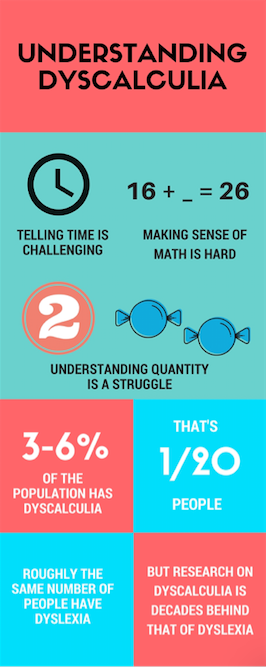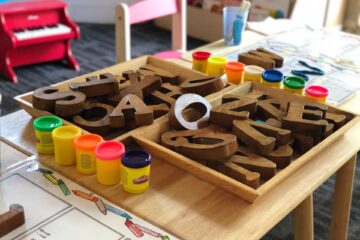Learning disabilities or disorders are largely ignored in our part of the world. Perhaps this is because we do not wish to identify ourselves with anything that we cannot see that causes weakness of any sort. It could also be as a result of the fact that we do not know much, if anything at all, about these disorders. Today, we’ll be focusing on learning disorders in children.
So what if my child has difficulty reading? He’ll just have to sit still and not play with his friends until he reads. Problems with math? Not my kid. She was born smart. I’ll just hire a tutor for her. She’ll be fine.
By saying things like this, we’ve condemned our children to a lifetime of difficulties simply because we did not know.
Then there are the parents who do know and have noticed that their child just doesn’t seem to learn like other kids and something seems amiss. They want help, they need help, but they don’t know where to get it. That’s where we come in, and this is the part where you keep reading.
What are learning disabilities?
A learning disability is a word that describes a problem with how people receive and perceive information. I know a child that frequently mixed up her multiplication and addition signs. She is very bright on a normal day, but tell her it’s time for math and you’d have successfully erased the shine from her life.
Just like this child, people with learning disabilities often have problems with reading, writing, doing math, or even understanding directions. This has nothing to do with how smart the child is; it just means that they may see, hear and understand things differently.
This automatically translates into simple everyday tasks like prepping for a test or paying attention in class being more difficult.
Please note that learning disabilities are not to be confused with autism, deafness, blindness, behavioural disorders or ADHD. We dealt with the latter in our previous articles, do well to check it out for proper clarification. Okay, so we know what learning disorders are, and what they are not, but what exactly causes learning disorders?
What exactly are cause of learning disabilities?
According to the Learning Disabilities Association of America, learning disabilities are due to genetic and/or neurobiological factors that alter brain functioning in a manner in which affects one or more cognitive processes related to learning. It differs in intensity and may affect the development of listening, speaking, understanding, reading fluency, phonetic knowledge, spelling, writing, number sense, computation, sign differentials, and problem-solving.
Learning disabilities typically run in families, and they cannot be cured or fixed. They can, however, be managed, and managed successfully.
Types of learning disabilities
Nonverbal Learning Disorder
Nonverbal learning disorder (NVLD) is a neurological condition marked by a collection of academic – and sometimes social – difficulties experienced by children of average or superior intelligence.
NVLD may include problems with drawing, writing, telling the time using analogue clocks or even interpreting facial expressions.Tasks like tying shoelaces that require motor coordination may also be affected.
It may also include problems with executive function and higher-order information processing, math and social skills.
Only one or two skill sets is affected in a child with NVLD, not all of them. If the child is strong in all areas except one or two of the aforementioned, it is a good idea to have them checked.
Dyspraxia
Dyspraxia is a neurological disorder that causes problems with movement and coordination, motor skills in general. The child may have difficulty holding things, tying her shoelaces, and always bumps into people and items.
Children with dyspraxia often have speech difficulties, difficulty with eye movements, and are sensitive to light, touch, taste and smell. Dyspraxia is also known as motor learning difficulties, perceptuo-motor dysfunction and developmental coordination disorder (DCD).
How you know :
- Children with dyspraxia are often perceived as ‘clumsy’.
- They have difficulties in planning and completing fine and gross motor tasks like waving goodbye or brushing their teeth (6).
- They find it difficult to plan what to do, and how to do it.
- As a baby, a child with dyspraxia may take a longer time to sit, crawl, walk, stand, speak, and be toilet trained.
- They might be slower in answering questions and take a longer time to build up their vocabulary.
- As they get older, they begin to have issues with subtle movements like tying shoelaces, using cutlery or doing buttons and zips.
- They have difficulties with playground movements like throwing a ball, skipping, and jumping.
- They have difficulties with classroom movements too like drawing, colouring, fixing puzzles etc.
- Some children find it hard to climb stairs.
What you do:
You take them to see a specialist. The specialist will test them, and once a diagnosis has been reached, several activities aimed at improving their motor coordination will be recommended.
In the house, you can encourage them to participate in active play. This involves physical activity that can help them improve motor activity. They’ll learn about their environment and themselves. And are also happier and more confident whilst being able to interact with other children better.
Fun fact: Did you know that Daniel Radcliffe, the man who played Harry Potter in the Harry Potter series has dyspraxia? Now you know!
Dysgraphia
Dysgraphia is a nervous problem that affects how a child writes, what their handwriting looks like, how they spell, and the ability to put their thoughts down on paper.
How you know:
- Children learning to write usually have distorted and unclear handwritings, and write slowly. When this persists and they don’t outgrow it, it might be dysgraphia.
- They have difficulty spacing things out on paper or within margins
- Children also write and erase a lot.
- They write incomplete sentences, have poor spelling including unfinished words or letters omitted.
- Often, they unusually position themselves when they write.
- This disability makes it difficult for them to write and think at the same time, and creative writing tasks are especially difficult for them.
What you do:
Take your child to the doctor. A licensed psychologist trained in learning disorders can help diagnose dysgraphia. It is a good idea if such a person is already on the school’s payroll.
Have your child practice writing on papers with larger spacing and wider margins.
You could also let them use computers to type. This won’t help their handwriting, but it’ll help with their spelling.
Dyslexia
Dyslexia affects how a child interprets language. This will affect how they read and write, read a comprehension and understand grammar. They may not be able to express themselves as they would like verbally and find it hard to put thoughts into words during a conversation.
How you know:
- Your child started talking late.
- They learn new words slowly and confuse words that sound alike.
- These children don’t easily remember the names of letters, colours and numbers.
- They have difficulty learning nursery rhymes and poems.
- Experiences problems processing and understanding what they hear
- They have difficulty finding the right word to use in a sentence or in answering a question
- Difficulty seeing and hearing the differences in words that sound familiar, and so occasionally mix them up.
- They have difficulty spelling and read well below the expected level for their age.
- Have problem pronouncing unfamiliar words and often mispronounce words.
- They avoid reading and tasks that require reading altogether.
- As they get older, they have trouble understanding jokes and idioms that do not have direct meanings.
- They have difficulty memorizing or even summarizing a story.
What you do:
Children with dyslexia and even those with other learning disabilities often have normal to high intelligence. They excel in other subjects that do not require the use of language. Due to this, most times, their condition can go noticed for years and follows them into adulthood. Sometimes, it is never discovered. Whenever you start to notice the symptoms, seek help.
The first person that teaches the child is most likely to notice this. It could be a parent or teacher. Talk often with their teachers. Find out exactly how they’re performing and if it’s below the standard.
Most classes require reading, it’s a basic skill in school. A child that has dyslexia will feel very frustrated with the school as a whole because they’re unable to keep up with their peers and this could cause social problems.
You could help them learn to read by using audiobooks or word processing programs.
Intensive teaching techniques can be employed. This includes step-by-step approaches to teaching reading. They usually occur more often and last longer than regular sessions.

Dyscalculia
Dyscalculia results in difficulty learning or comprehending basic math. Children with dyscalculia often do well in other subjects, except math.
How you know:

Your child loses track of numbers when counting. They still count on their fingers long after children their age have stopped.
They find it difficult to identify similar numbers in a group at a glance, for example a 5 and a 3.
Mix up their mathematical signs. They might substitute multiplication for addition and vice versa and division for subtraction and vice versa.
They find it hard to understand math word problems, fractions, graphs and charts.
Count money or read the clock.
Remember phone numbers or house numbers.
What you do:
Talk to your child’s teachers and doctor. The aim is to isolate the problem. You want to make sure it’s not a hearing or sight issue, and that he’s not struggling in other areas.
Once you’ve checked all boxes, make an appointment to see a learning specialist. The specialist will check computational skills, math fluency, mental computation and quantitative reasoning.
Once a diagnosis has been given, it’s time for treatment. Your child will need specially designed teaching plans, math learning games, and spend more time on math than other students.
You can help your child lower the anxiety and frustrations dyscalculia will bring. They should be allowed to count on their fingers and papers; use graph paper to keep columns neat; a calculator to crosscheck their arithmetic; and constant encouragement from you.
How Do I Respond As A Parent To My Child’s Learning Disability?
Knowledge, they say, is power. Childhood learning disabilities are not death sentences. They can’t be prevented or cured but can be effectively managed to the point that it’s almost impossible to tell. The thing with these disorders is that they are often mistaken for regular childish behaviours and so are overlooked.
You’ll need to learn as much as you can about their condition. Observe them closely.
Be always ready to dish out encouragement and praise for every little effort and progress made. Build on their strengths to compensate for their weaknesses.
As they get older, explain to them what they are going through so they can actively join you in the fight.
Learning disorders have no cure, but early intervention can help lessen their effects and give your child a normal life.



5 Comments
Osose · July 25, 2020 at 7:05 pm
Very informative article, nice one Oghosa!
Jay · July 27, 2020 at 5:11 am
This is quite insightful and interesting.. It’s a great article
Oghosa · July 29, 2020 at 12:47 pm
Thank you!
Osatae Egbon · August 2, 2020 at 7:01 am
This is informative. Great work!
Oghosa · August 3, 2020 at 7:49 pm
I’m glad you like it ?
Comments are closed.